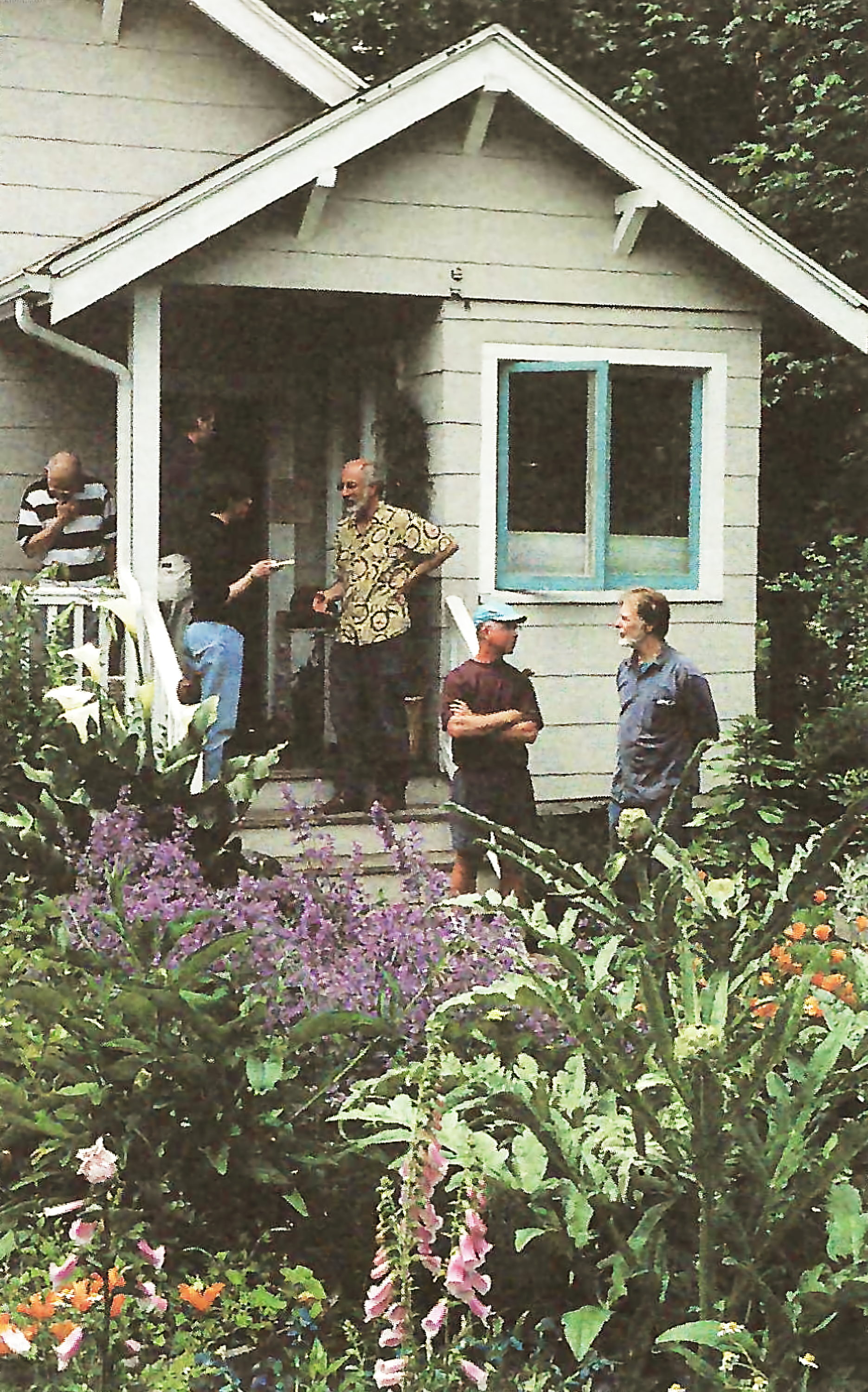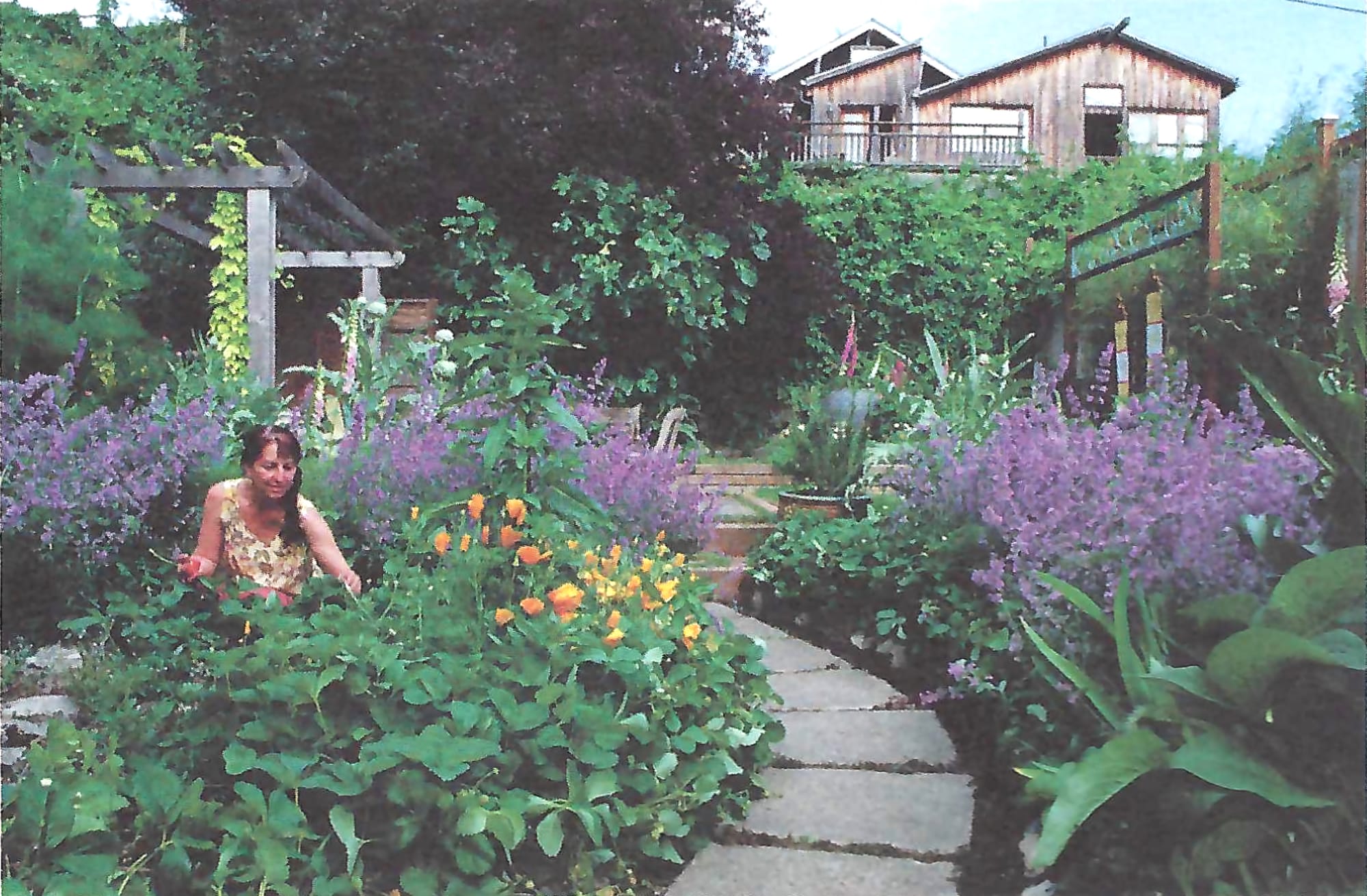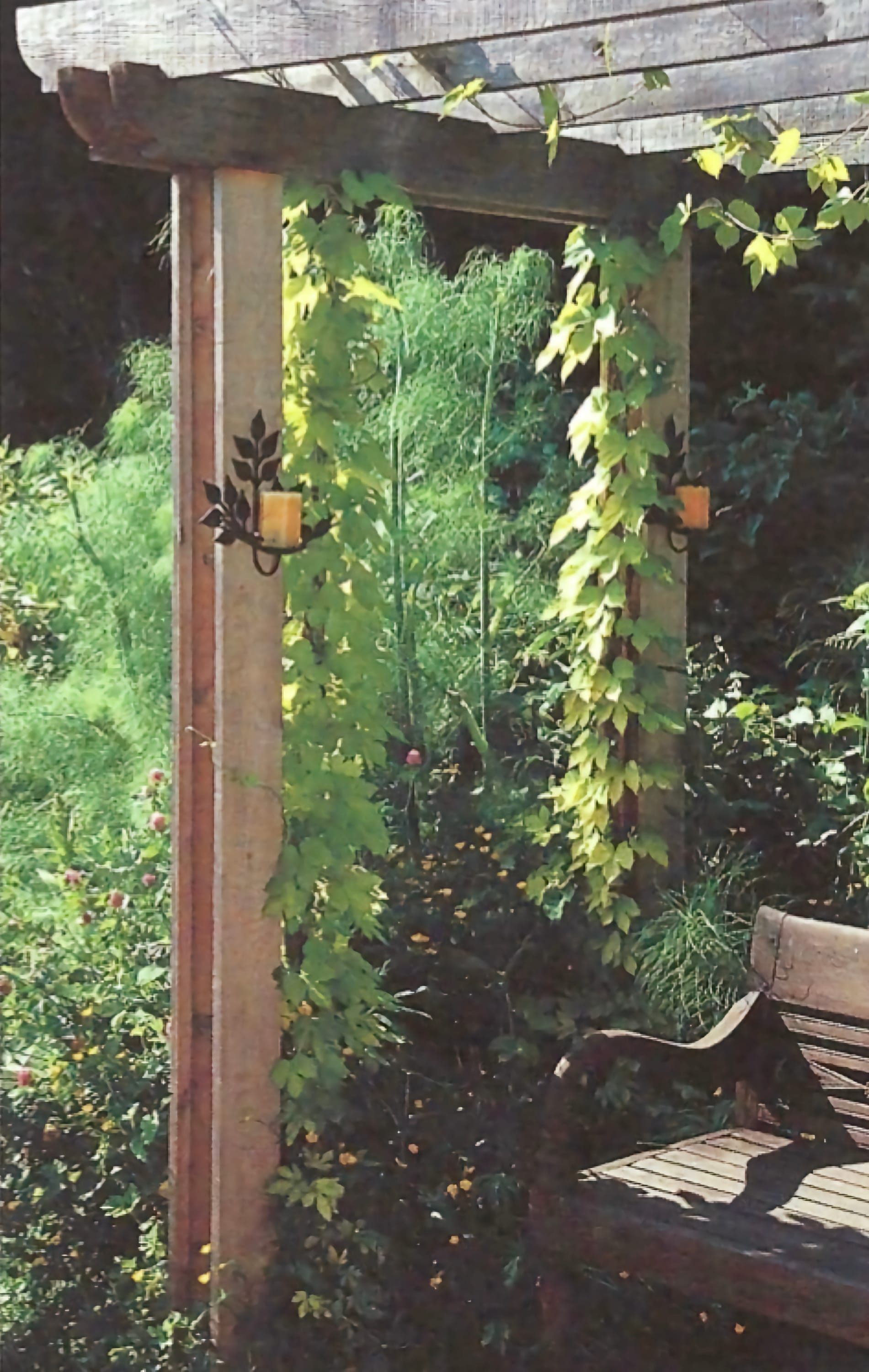Gardening for Life
Finding Space in a City for Wildlife Habitat
Stretch out on one of the old wooden seats on a shady patio of Sandra Dean’s backyard. It's a good place to ponder some of the things you don’t need.
You don’t need a lawn to have a lawn party.
You don’t need a big yard to entertain a big group of friends.
You don’t need money to create a lovely backyard habitat that’s pleasing to both people and wildlife.
 This Queen Anne Hill backyard is a lush, welcoming gathering place with various sunny and shady corners, comfortable seating, winding pathways, and cozy “rooms,” yet it lies only about ten minutes from downtown Seattle. Whatever it is that makes friends hang out in a crowded kitchen and ignore a spacious living room works also in Sandra's backyard. “People having a good time don't mind being squeezed a bit,” she observes.
This Queen Anne Hill backyard is a lush, welcoming gathering place with various sunny and shady corners, comfortable seating, winding pathways, and cozy “rooms,” yet it lies only about ten minutes from downtown Seattle. Whatever it is that makes friends hang out in a crowded kitchen and ignore a spacious living room works also in Sandra's backyard. “People having a good time don't mind being squeezed a bit,” she observes.
What’s left of Sandra's lawn is nine feet by nine feet. It serves to extend into open sunlight, a cloistered patio near the top of the terraced backyard. Sandra mows the tiny patch with an old-fashioned push mower and likes it. She and her husband, David Bilides, spend no money on the lawn. None.
There used to be a lot more to mow. The whole backyard was lawn.
“The first thing I did when I moved in here was to look at this big open area that was just a squared-off piece of grass, sloping from the kitchen door to the back of the property, and I thought, ‘How uncreative can you get?’ I began tearing it out.”
Uncreative, she is not. She's an artist whose colored pencil works range from explicit representations of plants to vivid abstractions expressing the energy of plants. She’s also a violinist who, with David, a percussionist, plays wild-sounding traditional Greek music with a group called Pangeo. Their garden looks the way their music sounds, with unrestrained splashes of purple, orange and gold. Bees, butterflies and birds are everywhere.

Sandra Dean’s garden vision is about as far as you can get from flattening, squaring and rolling the land into a lawn and then meeting a lawn's demands with poisons.
Their entire lot, from the street to the back fence, is 35 by 80 feet. Maybe a quarter of it is taken up by the front planting area next to the street. Their 1930s cottage (just 850 square feet) takes up another third. Even though Sandra and David have entertained as many as 50 guests at a time, there’s no great spacious area left for outdoor living. It just feels that way.
Settling down on a bench on the six-by-six deck outside the kitchen door, lemonade in hand, you can see it all right in front of you. Three gentle terraces, each about a foot high, create the backyard’s topography. On the highest, at the back of the property, the intertwining branches of a fig tree and an old purple-leafed plum create a tunnel over a winding walkway of patio brick.

The terrace below has the largest of the outdoor living spaces. It’s a patio made up of concrete squares, shaded on one side by the fig and plum tree, and at one end by golden hops that reach for the top of a simple arbor. A close relative of the hop that brewers use, it dies back seasonally to allow winter sun on the patio. It climbs eagerly in summer to provide breezy shade.
A golden hop vine climbs eagerly onto the arbor in summer, offering breezy shade. It dies back in winter, allowing the sun to warm the garden patio.
The third terrace slopes slightly towards the kitchen. Clouds of catmint, with their radiant deep blue blossoms, draw hundreds of bumblebees. Here and there huge artichokes ripen. Sandra and David don't harvest the globes but let them open to a light blue, a different shade from the mint but just as brilliant and attractive to birds and butterflies.
Winding through the terraces is a pathway made of large chunks of broken concrete. Sandra stored the chunks for six years before cutting them into curves with a concrete saw and placing them in easy winding patterns to connect the garden's many nooks and crannies.
Sandra’s a pushover for anything that comes up in the yard and looks decent. Once the lawn was gone, California poppies showed up uninvited. They found a home. So did Russell’s lupine, foxglove, fennel and cow parsnip.
“I didn't plant any of these things, but here they are,” she says, delighted at what the birds and the Seattle breeze have brought her. “I suppose some of them are weeds, since I didn't plant them. But don’t they look wonderful?”